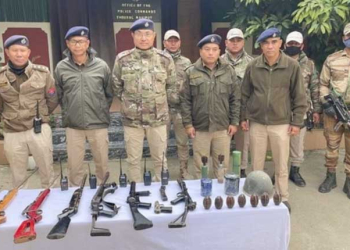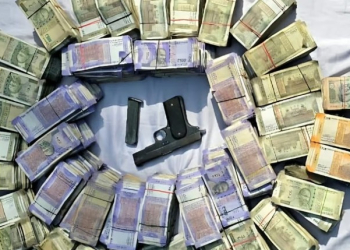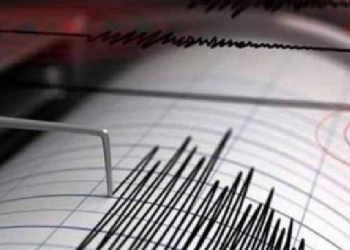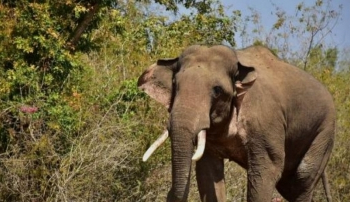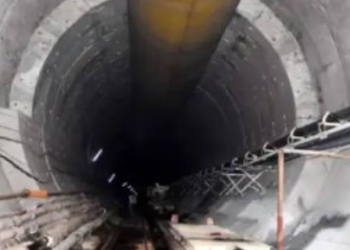New Delhi: “If you ask anyone in India who is our country’s greatest friend, every person, every child knows that it is Russia.” These were the words of Prime Minister Narendra Modi to President Vladimir Putin during their maiden meeting at the BRICS Summit in Brazil in July 2014.
It is no surprise then, that in December 2021, Putin broke precedence when he chose to visit India for the 21st Annual India-Russia Summit, and the inaugural round of 2+2 Ministerial Dialogue; he had earlier declined to leave Russia to attend the G-20 in Rome, followed by COP 26 in Glasgow citing the Covid pandemic.
And why not!
The two nations indeed share a special and privileged strategic partnership.
Since the mid-1950s, Soviet socialist democracy has assisted the Indian economy; be it military cooperation, food aid, steel plants, trade delegations, or agricultural expertise, to name a few. India has also not forgotten the Soviet ‘Treaty of Peace and Friendship’ in August 1971, which offset China’s plan to open a second front to support the ‘evil empire’ of Pakistan, when it started the Indo-Pak War in December 1971.
And then, the year 1991 shares the national memory of both India and the Russian Federation (RF); RF for the dissolution of USSR in December 1991, India, for its own glasnost (openness!) moment, the balance of payments crisis followed by the liberalisation of the economy.
The RF has consistently supported India in its bid for a permanent seat at the UNSC, and membership of the Nuclear Suppliers Group (NSG).
Both countries are also engaged in the Shanghai Cooperation Organisation (SCO) as also in groups such as BRICS and RIC (Russia India China).
Russia is also sympathetic to Indian cause of being a ‘victim of terror’ due to ‘policy of state sponsored terrorism’ from neighbouring Pakistan and has extended its support to India on abrogation of Article 370.
Some might argue that since 1991, successive Indian governments have cultivated closer ties with the United States. Nothing could be further from truth. While Indo-US strategic relations have significantly improved, especially after the historic 2006 Civil-Nuclear deal, this has happened alongside even stronger bilateral relations between India and Russia.
As in chess, where an ‘Indian Defence’ is a popular opening for those who find themselves playing black, India’s strategic options have continued to get complicated after the end of the Cold War.
Much like the India of the Mahabharata era, the world in the 21st century is ‘multi-polar.’
New Delhi, then, has learnt much from the chess wizard Avon Nimzowitsch’s ‘Nimzo Indian Defence’ to create latitude for itself and foster stronger ties with Russia, while co-operating with the United States to foster a healthy balance of power relationship in Asia.
Vladivostok-Chennai Maritime Corridor (VCMC)
In September 2019, during his visit to Vladivostok, PM Modi unveiled India’s ‘ct Far East Policy’ while at the same time both sides signed an agreement to develop a Vladivostok – Chennai sea route. This is a win-win paradigm for both nations. While becoming India’s springboard in the East Asian market, this maritime corridor also provides Russia a much sought after ‘Pivot to Asia.’ A vibrant sea route between Chennai and Vladivostok will help upscale trade relations between the two nations. This will bolster bilateral maritime trade between India and Russia from the current $11 billion to $30 billion by 2025. For India, then, the VCMC corridor will demand what the American naval theorist Alfred Mahan said, “to secure commerce, by political measures, conducive to military, or naval, strength.” And then to secure their national interests, the Indian Navy and Russian Navy will require establishing an increased maritime presence in the disputed waters of Western Pacific Ocean. This in the long run will balance China’s rising maritime hegemony in Asia.
Nuclear Cooperation
Russia was the first foreign country to engage in India’s nuclear power industry including the evolution to exercise and operate nuclear submarines. On the civilian nuclear co-operation, over ten atomic plants are planned to be set-up in Kudankulam in Tamil Nadu. On the military side, the lease of Chakra SSN for two successive cycles of 10 years each, assistance in operationalising the nuclear triad onboard the SSBN Arihant, and continuing support for India’s indigenous SSN program are good examples of long-term relationship between the two countries. While France and the United States have emerged as prospective options to diversify India’s nuclear engagement, it seems that in the near future, Russia will continue to be our strongest ally in terms of transfer of nuclear technology.
Capability Development and Capacity Building
Russia has been the most consistent and reliable partner for India’s security interest in the region. Around 60-70 per cent of India’s defence imports are from Russia. The ‘Indra’ (India and Russia) series of maritime exercises between Indian Navy and Russian Navy since 2003 has grown from strength to strength. In its latest edition, in July 2021, Nav’s frigate Tabar attended the 325th RuFN Day celebrations at St Petersburg by sailing across 8,000 nautical miles (approx 15,500 kilometers across the Mediterranean Sea, Atlantic Ocean and North Sea). The joint development of the Brahmos (Brahmaputra and Moscow) supersonic cruise missile (to be developed under the aegis of ‘Make in India’) is yet another classic example of strengthening ties between the two nations. In addition, India’s only aircraft carrier, the Vikramaditya and its air wing, is the crown jewel testimony of vibrant India-Russian ties. Finally, as news is coming in (as recent as 14 Jan 2022!), of Biden administration’s decision to waive CAATSA sanctions against India for buying Russian S-400 air defence system, it is yet another proof of an emerging multi-polar world order.
The Way Forward
In times of tectonic geopolitical shift in the broader Indo-Pacific region, India and Russia have one fundamental common interest; the desire to evolve a multi-polar world order. This enduring interest will continue to drive close co-operation between the two largest nations in Eurasia. As natural allies, India must continue offering its resources and support to Russia; in return Russia provides the support of its power to India. The endeavour must be that while India and Russia are operating as individual instruments in an orchestra (with their distinct pieces of brilliance), both nations must obtain a wide-ranging set of “symphonies” that will establish and sustain cooperation in areas of mutual national interests.
(IANS)




